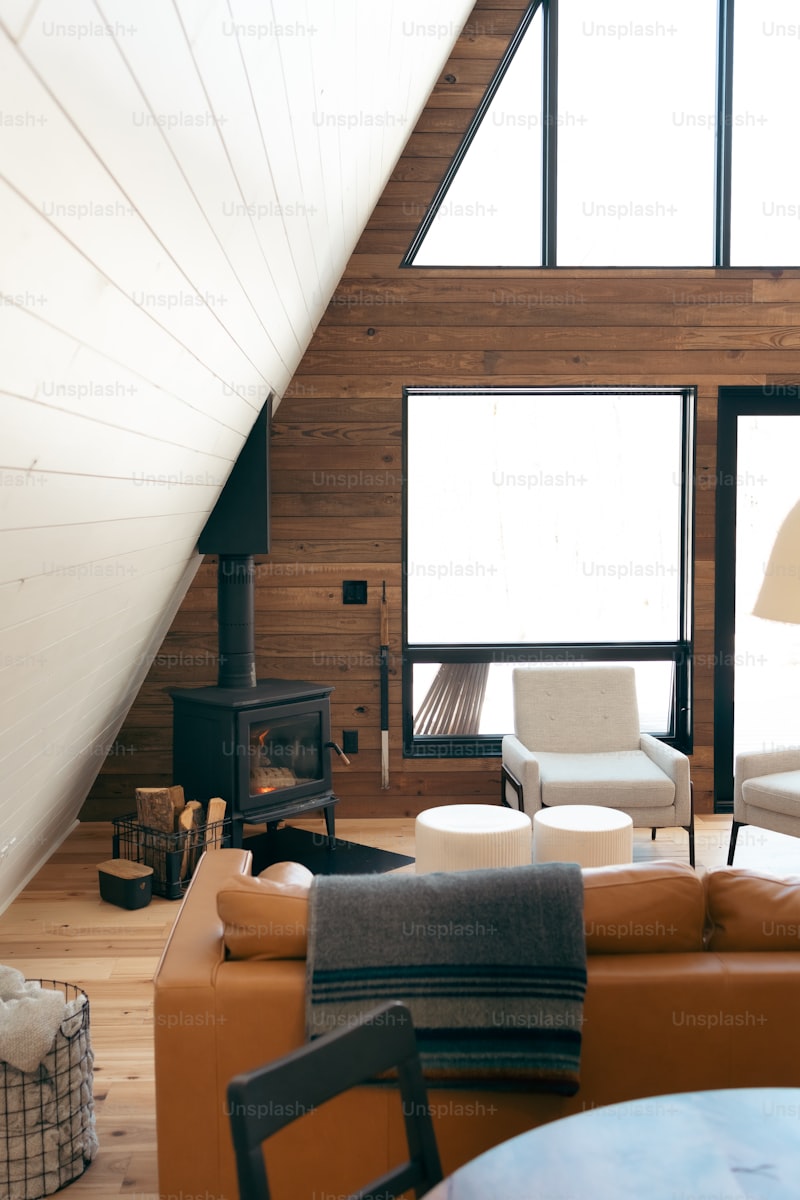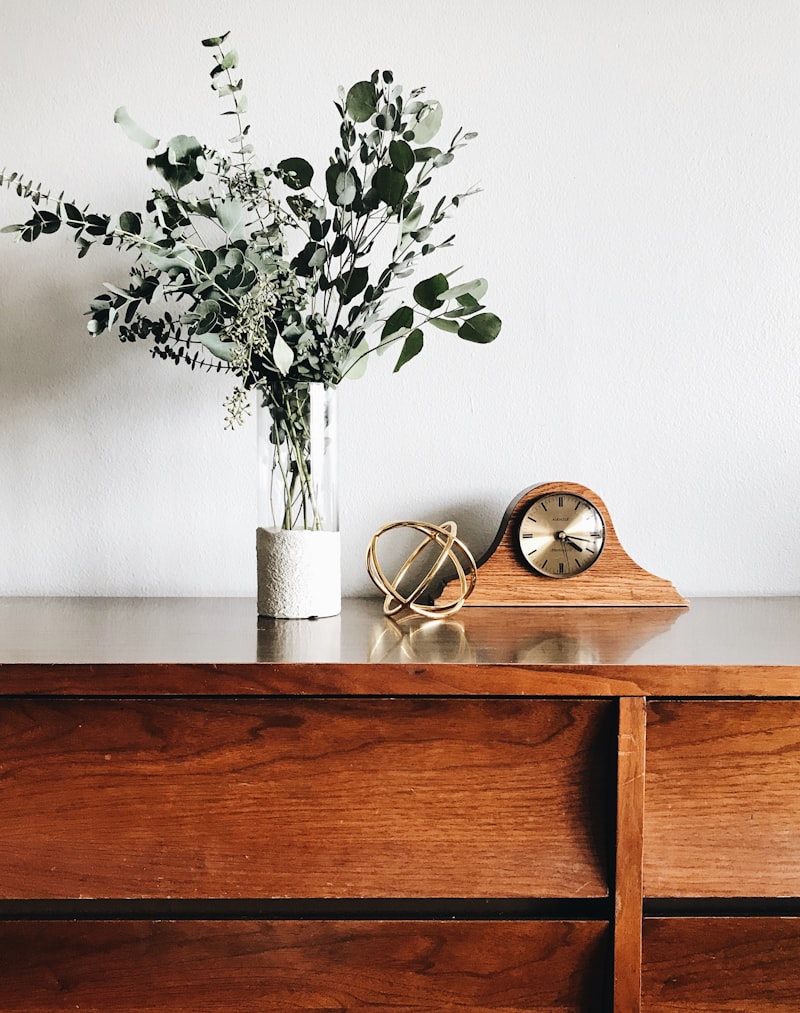Minimalist design embraces the principle of “less is more.” By stripping away excess decorations and focusing on essential elements, you can create a space that feels uncluttered and serene. Start with a neutral color palette—soft whites, gentle grays, and earth tones—to create a sense of openness and lightness. These colors not only make the space feel larger but also contribute to a tranquil atmosphere.
Furniture in a minimalist Zen environment should be functional yet elegant. Choose pieces with clean lines and simple shapes, avoiding ornate details. Opt for natural materials like wood, bamboo, or stone, which bring a sense of warmth and grounding to the space. Each piece of furniture should have a purpose and not overwhelm the room.
Lighting plays a crucial role in setting the mood. Natural light is ideal, so maximize windows and keep them unobstructed. When artificial lighting is needed, opt for soft, diffused lights rather than harsh overhead fixtures. This gentle lighting enhances the minimalist ambiance and creates soothing shadows that add depth to the space.
Accessories should be kept to a minimum in a minimalist Zen environment. Select a few carefully curated pieces that hold personal significance or evoke a sense of calmness, such as a small sculpture, a potted plant, or a piece of artwork with a serene landscape. Each item should contribute to the overall harmony of the space without overwhelming it.
Mastering Minimalism: How to Achieve Zen in Your Home Design

Imagine walking into a space where every item serves a purpose, where tranquility and simplicity reign supreme. This is the essence of minimalist home design—a trend that goes beyond aesthetics to embrace a lifestyle of less clutter and more clarity.

At its core, minimalism is about stripping away the unnecessary to focus on what truly matters. In home design, this translates into clean lines, open spaces, and a sense of calm. Think of a room adorned with just a few carefully chosen pieces of furniture, each one enhancing the overall harmony of the space.
To achieve zen in your home design through minimalism, start by decluttering. Ask yourself: Do I really need this? Keep only the essentials that bring you joy or serve a practical purpose. This not only clears physical space but also declutters the mind, promoting a sense of peace.
Next, embrace neutral colors and natural materials. Shades like white, beige, or soft greys create a serene atmosphere, while materials such as wood, stone, and bamboo add warmth and texture. Minimalist design often incorporates elements from nature, fostering a connection to the outdoors within the confines of your home.
Furniture should be functional yet elegant, with a focus on quality over quantity. Each piece should complement the space without overwhelming it. Opt for multifunctional furniture that serves dual purposes, such as a sleek coffee table with hidden storage or a minimalist bed frame with built-in shelves.
Lighting plays a crucial role in minimalist design. Natural light is ideal, so maximize windows and use sheer curtains to allow sunlight to flood the room. For artificial lighting, choose fixtures that are simple yet striking—a pendant lamp with clean lines or recessed lighting that casts a soft glow.
Mastering minimalism in your home design is about creating an environment that promotes serenity and clarity. By embracing simplicity, decluttering your space, and choosing elements that evoke calmness, you can transform your home into a sanctuary of zen. Allow each piece and detail to speak volumes without saying a word, achieving harmony that resonates deeply within.
Serenity in Simplicity: Crafting a Zen Space with Minimalist Principles
Minimalism is more than just a design aesthetic; it’s a lifestyle choice that promotes mindfulness and intentionality. By focusing on essentials and decluttering unnecessary items, you allow space for peace and creativity to flourish. Picture a living room with a few carefully chosen pieces of furniture, each one contributing to an atmosphere of openness and tranquility. The absence of excess decor or crowded shelves creates a sense of spaciousness and light.
Incorporating minimalist principles into your home begins with decluttering. Ask yourself: Do I really need this? Streamline your belongings to include only what you truly love and use daily. This intentional approach not only simplifies your physical surroundings but also brings mental clarity and reduces stress.

Natural materials such as wood and bamboo can enhance the minimalist vibe, adding warmth and texture without overwhelming the space. Soft, neutral colors like whites, grays, and earth tones further contribute to a soothing atmosphere, creating a canvas where peace can thrive.
Imagine your bedroom as a sanctuary of rest, with a bed adorned with crisp, white linens and a few carefully chosen decorative elements that inspire relaxation. Each piece in the room has a purpose, contributing to a restful environment conducive to a good night’s sleep.
Embracing minimalist principles allows you to craft a Zen space that promotes serenity and clarity. By focusing on simplicity, decluttering with intention, and choosing natural materials, you create a haven where you can unwind, recharge, and find peace amidst the busyness of life.
Minimalist Magic: Transforming Your Space into a Zen Sanctuary
In a minimalist space, less is more. Start by decluttering and paring down your belongings to only the essentials. This process not only clears physical space but also declutters the mind, fostering a sense of clarity and calmness. Focus on quality over quantity when choosing furniture and decor pieces. Opt for clean lines, neutral colors, and natural materials like wood and bamboo to create a harmonious atmosphere.
Lighting plays a crucial role in minimalist design. Maximize natural light by keeping windows unobstructed and using sheer curtains or blinds. Incorporate soft, ambient lighting with strategically placed lamps or pendant lights to enhance the soothing ambiance.
A minimalist sanctuary is also about creating functional zones that promote relaxation and mindfulness. Designate areas for different activities, such as reading, meditation, or yoga, with minimalistic furniture arrangements that encourage flow and openness.
Nature-inspired elements bring a touch of Zen to your minimalist oasis. Introduce indoor plants like succulents or peace lilies to purify the air and add a splash of greenery. Use natural textures such as linen or cotton for cushions and throws to evoke a sense of comfort and serenity.
The Art of Zen: Minimalist Design Tips for a Calm and Balanced Home
In the bustling chaos of modern life, finding moments of tranquility is a treasure. One way to invite peace into your daily life is through minimalist design. Embracing the principles of Zen, minimalist design focuses on simplicity, functionality, and creating a harmonious environment. Imagine walking into a space that feels open, airy, and effortlessly organized – that’s the essence of minimalist design.
So, how can you bring the Zen-like calmness into your home? Start by decluttering. Minimalism is not just about aesthetics but also about eliminating excess. Take a critical look at your space and ask yourself: What do I truly need here? Clear out the unnecessary items and keep only those that serve a purpose or bring you joy. This process not only frees up physical space but also clears your mind.

Next, embrace natural light and open spaces. Minimalist homes often feature large windows that allow natural light to flood in, creating a sense of warmth and expansiveness. Arrange your furniture to maximize open areas, promoting a sense of flow and freedom. Think of your home as a canvas where each piece plays a role in the overall composition.
When it comes to colors and materials, less is more. Opt for neutral tones like whites, greys, and earthy hues that evoke serenity. Incorporate natural materials such as wood and stone to add texture and a grounding element to your space. Every element should have a purpose and contribute to the overall calmness of the room.
Organizational systems are key to maintaining a minimalist home. Invest in storage solutions that are both functional and aesthetically pleasing. Think sleek cabinets, hidden storage compartments, and multifunctional furniture pieces. By keeping surfaces clear and belongings neatly stored away, you create a sense of order that enhances the peaceful atmosphere.
Frequently Asked Questions
How can I incorporate natural elements into a minimalist Zen space?
Learn how to seamlessly integrate natural elements into a minimalist Zen space with our concise guide. Discover practical tips and techniques to bring the tranquility of nature indoors while maintaining the simplicity and serenity essential to Zen aesthetics.
What are the key principles of Zen in minimalist design?
Discover the fundamental principles of Zen that influence minimalist design. Learn how simplicity, balance, and naturalness define Zen aesthetics, emphasizing clarity, emptiness, and tranquility. Explore how these principles inspire minimalist spaces to evoke a sense of calm, harmony, and functionality.
What colors are best for achieving a Zen atmosphere in minimalist design?
Discover the optimal colors for creating a Zen ambiance in minimalist design.
How do I declutter effectively to achieve a minimalist Zen environment?
Learn effective strategies for decluttering to achieve a minimalist Zen environment with our concise guide. Discover practical tips to streamline your space and cultivate tranquility.
What furniture and decor items are essential for a minimalist Zen room?
Discover the essential furniture and decor items for creating a minimalist Zen room. Learn about the serene aesthetics of Zen design, focusing on simplicity and tranquility. Find out which pieces, such as low-profile platform beds, tatami mats, natural materials like wood and bamboo, and sparse yet meaningful decorations, are key to achieving a peaceful and clutter-free space.



